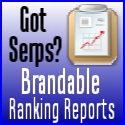 Look how old this is!
Look how old this is! I post at SearchCommander.com now, and this post was published 19 years 3 months 16 days ago. This industry changes FAST, so blindly following the advice here *may not* be a good idea! If you're at all unsure, feel free to hit me up on Twitter and ask.
Sometimes there is a certain peiece of spam that will make it past server mail filters constistently. Why? It could be that the offending message is sent to another address first, which is then forwarded to your real address, appearing as if it were send directly there.
In English… ?
Let’s say I have a hotmail or yahoo or other email address of [email protected]. For the sake of convnience, I may have that forwarded to my “real” address of [email protected].
That means my spam filter thinks I’m getting forwarded mail from a known friend, and therefore lets it through. So, even though it looks like and clearly says in the “to” field that it’s going to me now, the internet headers will show me the truth.
To determine where a message is coming from, whether “forwarded” from another address or going to a mailing list you’re on, you need to look at the email “header” or “internet header” which is not visible under normail email viewing.
Here’s how to determine your internet header:
In Outlook –
Highlight that spam in your email in box (without opening) and right click, choosing “options”
In Outlook Express –
Highlight that spam in your email in box (without opening) and right click, choosing “properties” then choose the “details tab”
In Outlook look at the bottom with a scroll bar. In Outlook Express, look right on the tab view. It’s cryptic, but it sort of makes sense if you read it. You’ll at least get some clues (by the domain names) to help figure out how it’s getting to you. Knowing that the spam is coming from a forwarded email address or mailing list can help you to remove yourself from it’s path through other means.
Remember,as I wrote about in September, if you really want to stop 100% of all spam, there’s only one way, and that’s with an “opt in” spam service that’s quick to set up. If you have an Outlook contact list or address book, you can make them all “safe senders” and very few people would be inconvenienced by having to “opt in”. Only new senders would have to “verify” themselves once. Anyone you send mail to can be automatically added also, eliminating their need to opt-in. The best opt in program I know of, that will cover 5 email addresses, is SpamArrest. You can get a free 30 day trial here.



















